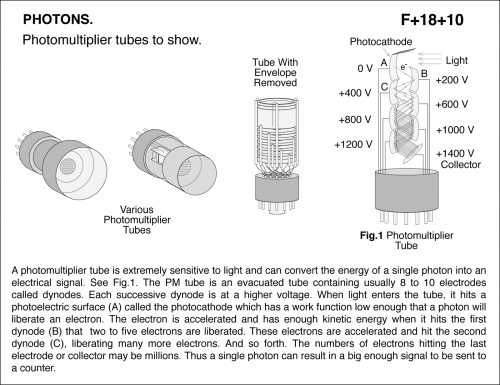Photomultiplier tubes to show.
Primary tabs
Photomultiplier tubes to show. A photomultiplier tube is extremely sensitive to light and can convert the energy of a single photon into an electrical signal. See Fig.1. The PM tube is an evacuated tube containing usually 8 to 10 electrodes called dynodes. Each successive dynode is at a higher voltage. When light enters the tube, it hits a photoelectric surface (A) called the photocathode which has a work function low enough that a photon will liberate an electron. The electron is accelerated and has enough kinetic energy when it hits the first dynode (B) that two to five electrons are liberated. These electrons are accelerated and hit the second dynode (C), liberating many more electrons. And so forth. The numbers of electrons hitting the last electrode or collector may be millions. Thus a single photon can result in a big enough signal to be sent to a counter.
UCB Index:
F+18+10
PIRA Index:
9B20.30
UCB Taxonomy:
PIRA Taxonomy:
Popularity:
- Log in to post comments


Comments
buehlert
Thu, 03/14/2013 - 14:20
Permalink
interesting